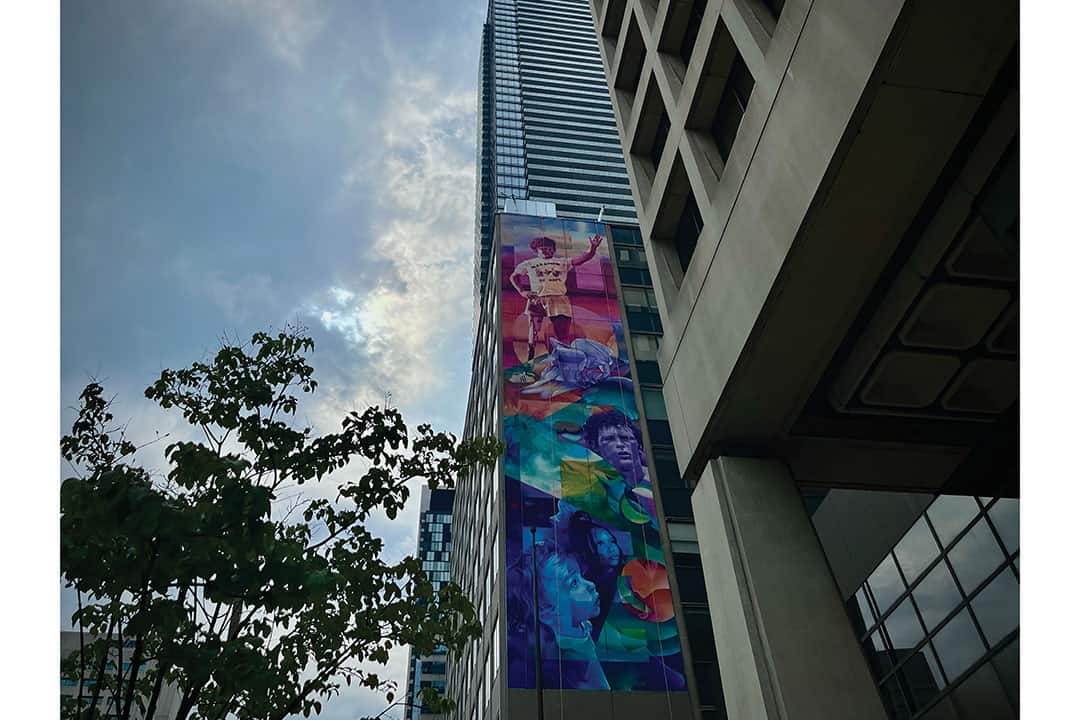On September 18, the annual Terry Fox Run, which is a marathon to raise funds for cancer research, returned in person at a number of Toronto locations. The event is named after Terry Fox, a Canadian athlete and an advocate for cancer research. The University of Toronto Terry Fox Run was still held virtually this year, but has raised over $4,000 as of September 18.
This fall, U of T’s Rehabilitation Sciences Building will also be adorned with a mural honouring Fox, according to a statement from a U of T spokesperson.
Fox and his legacy
Terry Fox was a Canadian athlete who lost his right leg to cancer at the age of 18. While undergoing treatment, he witnessed the suffering of other cancer patients and decided to do something to support them. In April 1980, Fox began his Marathon of Hope, in which he planned to run across the country on his artificial leg to raise money for cancer research and raise awareness of the disease in the process. Fox ran about 42 kilometres per day, across the provinces of Ontario, Québec, New Brunswick, Prince Edward Island, Newfoundland and Labrador, and Nova Scotia. His journey raised about $10 million for cancer research.
In September 1980, the cancer spread to his lungs, and Fox was forced to stop running. He passed away at the age of 22, on June 28, 1981 in New Westminster.
The Terry Fox Foundation, overseen by Fox’s family, organizes an annual Terry Fox Run to raise funds for cancer research. The foundation has raised more than $800 million over the years.
For Jim Woodgett, the president and scientific director of the Terry Fox Institute and a professor in the Department of Medical Biophysics at U of T, the Terry Fox Run is an inspirational event that represents “the country saying to Terry, ‘Thank you for bringing us together and showing us what we, as a country, can do when we’re united.’ ”
According to Woodgett, the run also materially helps advance cancer research. The Terry Fox Institute receives donations from Terry Fox Runs, which are redirected to selected cancer research programs. The institute also conducts research through a series of cancer research centres across Canada, which are supported by the federal government and donors.
Rehabilitation Sciences Building mural
The artwork is a collaboration between the university, the City of Toronto, and the Legacy Art Project, featuring a design by multidisciplinary artist Que Rock and Canadian graffiti artist Alexander Bacon. The design was selected by a committee that included Fox’s brother and niece.
The mural that will grace the side of the Rehabilitation Sciences Building is currently being finalized for its official launch this fall. It portrays Terry Fox running on his artificial leg, while waving. Further down is another image of him, standing in front of an audience that looks up at him admiringly.
In a statement on the City of Toronto’s website, Bacon wrote that the art focuses on Fox’s artificial leg “as a symbol of his achievement.” He explained that the mural was inspired by the athlete’s bravery, and that he hopes the artwork will continue Fox’s legacy.
The Rehabilitation Sciences building was chosen to host the mural because it lies along the path Terry Fox took when he crossed Nathan Phillips Square in 1980. It is also an active site for cancer research.
“We hope this artwork will both celebrate Terry Fox’s run down University Avenue as part of his Marathon of Hope in 1980 and remind us all of what a determined individual can achieve as we go about our lives,” Woodgett wrote in an email to The Varsity.


